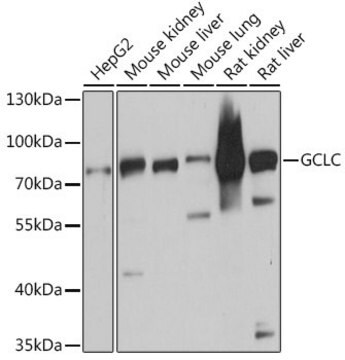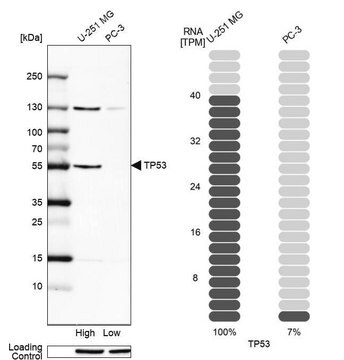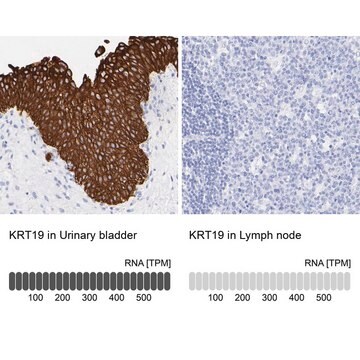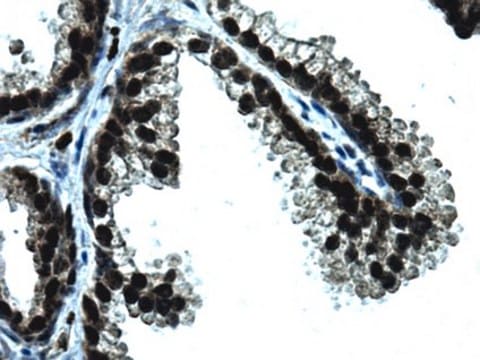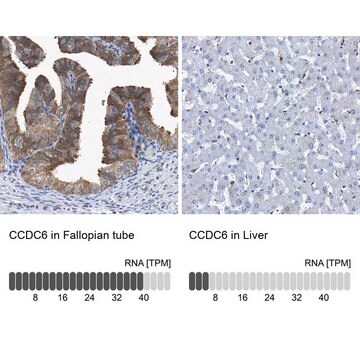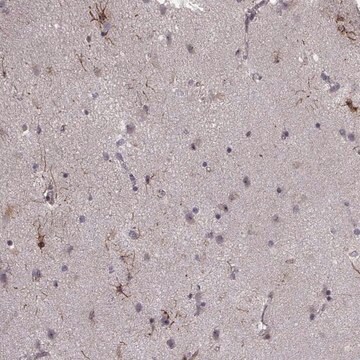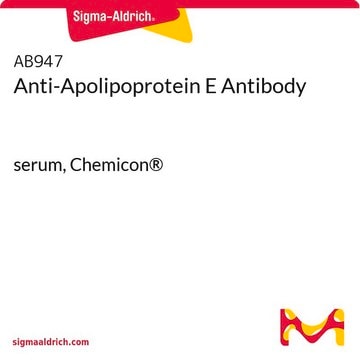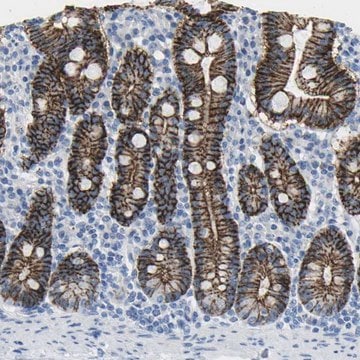일반 설명
We are committed to bringing you greener alternative products, which adhere to one or more of The 12 Principles of Green Chemistry.This antibody is Preservative-free, produced without the harm or sacrifice of animals and exceptionally stable to allow for ambient shipping and storage if needed and thus aligns with "Waste Prevention", "Designing Safer Chemicals" and "Design for Energy Efficiency".
Click here for more information.
ZooMAb® antibodies represent an entirely new generation of recombinant monoclonal antibodies.Each ZooMAb® antibody is manufactured using our proprietary recombinant expression system, purified to homogeneity, and precisely dispensed to produce robust and highly reproducible lot-to-lot consistency. Only top-performing clones are released for use by researchers. Each antibody is validated for high specificity and affinity across multiple applications, including its most commonly used application. ZooMAb® antibodies are reliably available and ready to ship when you need them.
특이성
Clone 1D19 is a ZooMAb® Rabbit recombinant monoclonal antibody that specifically detects Glutamate-cysteine ligase regulatory subunit (GCLM).
면역원
His-tagged recombinant fragment corresponding to the first 271 amino acids of Human Glutamate-cysteine ligase regulatory subunit (GCLM).
애플리케이션
Quality Control Testing
Evaluated by Western Blotting in HeLa cell lysate.
Western Blotting Analysis: A 1:1,000 dilution of this antibody detected GCLM in HeLa cell lysate.
Tested Applications
Western Blotting Analysis: A 1:1,000 dilution from a representative lot detected GCLM in COS-1, HT-29, A549, and NIH3T3 cell lysate.
Immunocytochemistry Analysis: A 1:100 dilution from a representative lot detected GCLM in A549 cells.
Immunohistochemistry (Paraffin) Analysis: A 1:100 dilution from a representative lot detected GCLM in human liver tissue sections.
Affinity Binding Assay: A representative lot of this antibody bound recombinant Human GCLM with a KD of 2.0 x 10-7 in an affinity binding assay.
Flow Cytometry Analysis: 0.1 μg from a representative lot detected GCLM in one million A549 cells.
Note: Actual optimal working dilutions must be determined by end user as specimens, and experimental conditions may vary with the end user
표적 설명
Glutamate-cysteine ligase regulatory subunit (UniProt: P48507; GCS light chain, Gamma-ECS regulatory subunit, Gamma-glutamylcysteine synthetase regulatory subunit, Glutamate-cysteine ligase modifier subunit) is encoded by the GCLM (also known as GLCLR) gene (Gene ID: 2730) in human. Glutathione (GSH), an abundant cellular antioxidant, is maintained at millimolar concentrations in most cells. Although the GSH levels can vary as much as 10-fold between different cell types, the concentration of GSH in a given cell type is consistent, unless modified by cellular redox reactions. Glutamate cysteine ligase (GCL), which synthesizes -glutamyl-cysteine ( -GC), is the rate-limiting enzyme in GSH biosynthesis. GCL is a heterodimeric enzyme that is composed of a catalytic (GCLC) and a modifier (GCLM) subunit that are encoded by separate genes on different chromosomes. GCLC possesses the catalytic activity for -GC formation. GCLM interacts with GCLC, making the holoenzyme (GCLholo) that is kinetically more efficient in -GC synthesis. GCLM (-/-) knockout mice show significantly reduced levels of GSH compared the wild-type mice. In human, GCL deficiency is a rare autosomal recessive trait that compromises production of glutathione and subjects show markedly reduced levels of erythrocyte glutathione, leading to hemolytic anemia and, in some cases, impaired neurological function. Two isoforms of GCLM have been described that are produced by alternative splicing. This ZooMAb® recombinant monoclonal antibody, generated by our propriety technology, offers significantly enhanced specificity, affinity, reproducibility, and stability over conventional monoclonals. (Ref.: Willis, MN., et al. (2011). Biochemistry. 50(29); 6508-6517; Chen, Y., et al. (2005). J. Biol. Chem. 280(40); 33766-33774).
물리적 형태
Purified recombinant rabbit monoclonal antibody IgG, lyophilized in PBS with 5% Trehalose, normal appearance a coarse or translucent resin. The PBS/trehalose components in the ZooMAb formulation can have the appearance of a semi-solid (bead like gel) after lyophilization. This is a normal phenomenon. Please follow the recommended reconstitution procedure in the data sheet to dissolve the semi-solid, bead-like, gel-appearing material. The resulting antibody solution is completely stable and functional as proven by full functional testing. Contains no biocide or preservatives, such as azide, or any animal by-products. Larger pack sizes provided as multiples of 25 μL.
재구성
300 μg/mL after reconstitution at 25 μL per vial. Please refer to guidance on suggested starting dilutions and/or titers per application and sample type.
저장 및 안정성
Recommend storage of lyophilized product at 2-8°C; Before reconstitution, micro-centrifuge vials briefly to spin down material to bottom of the vial; Reconstitute each vial by adding 25 μL of filtered lab grade water or PBS; Reconstituted antibodies can be stored at 2-8°C, or -20°C for long term storage. Avoid repeated freeze-thaws.
법적 정보
ZooMAb is a registered trademark of Merck KGaA, Darmstadt, Germany
면책조항
Unless otherwise stated in our catalog or other company documentation accompanying the product(s), our products are intended for research use only and are not to be used for any other purpose, which includes but is not limited to, unauthorized commercial uses, in vitro diagnostic uses, ex vivo or in vivo therapeutic uses or any type of consumption or application to humans or animals.

